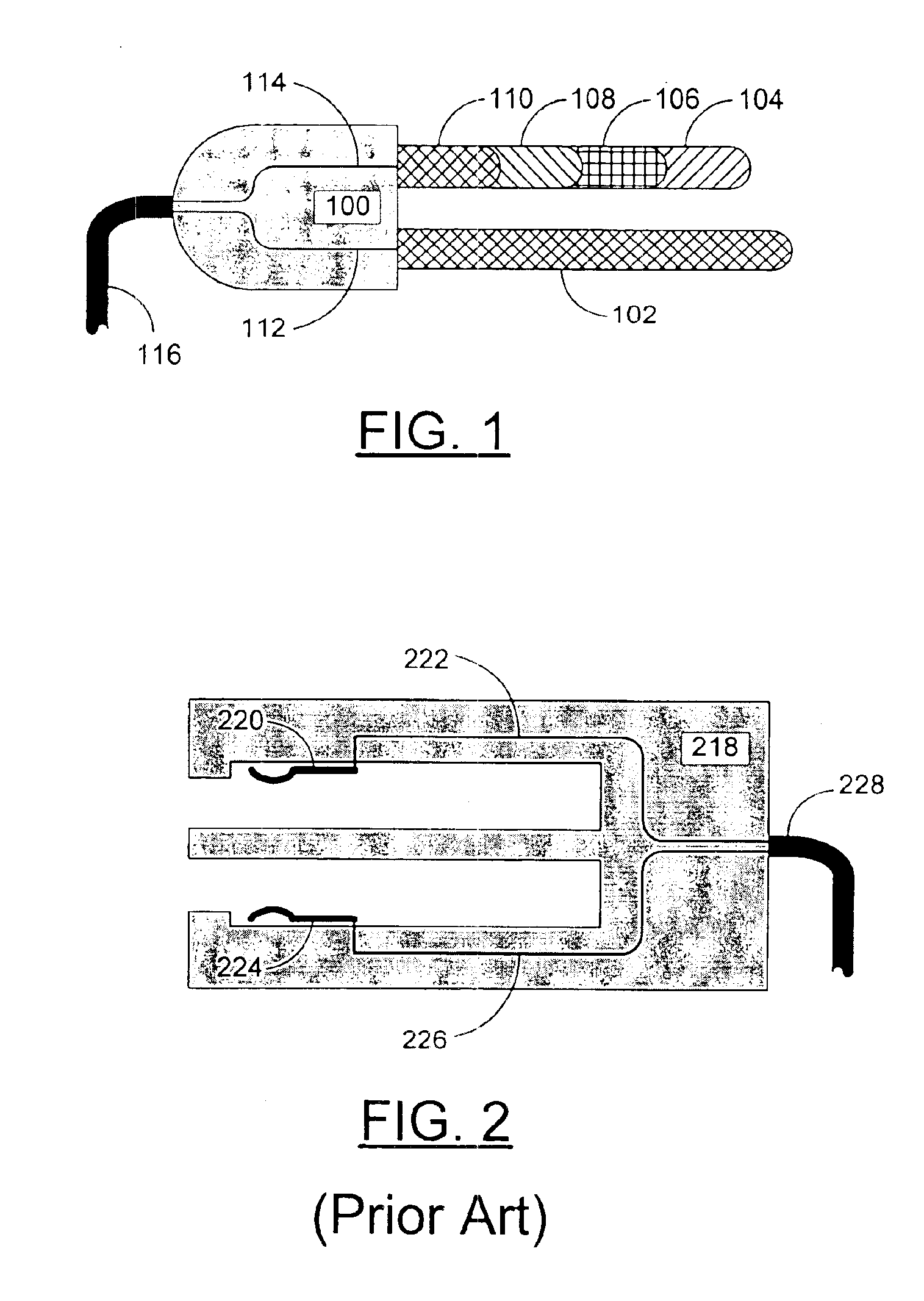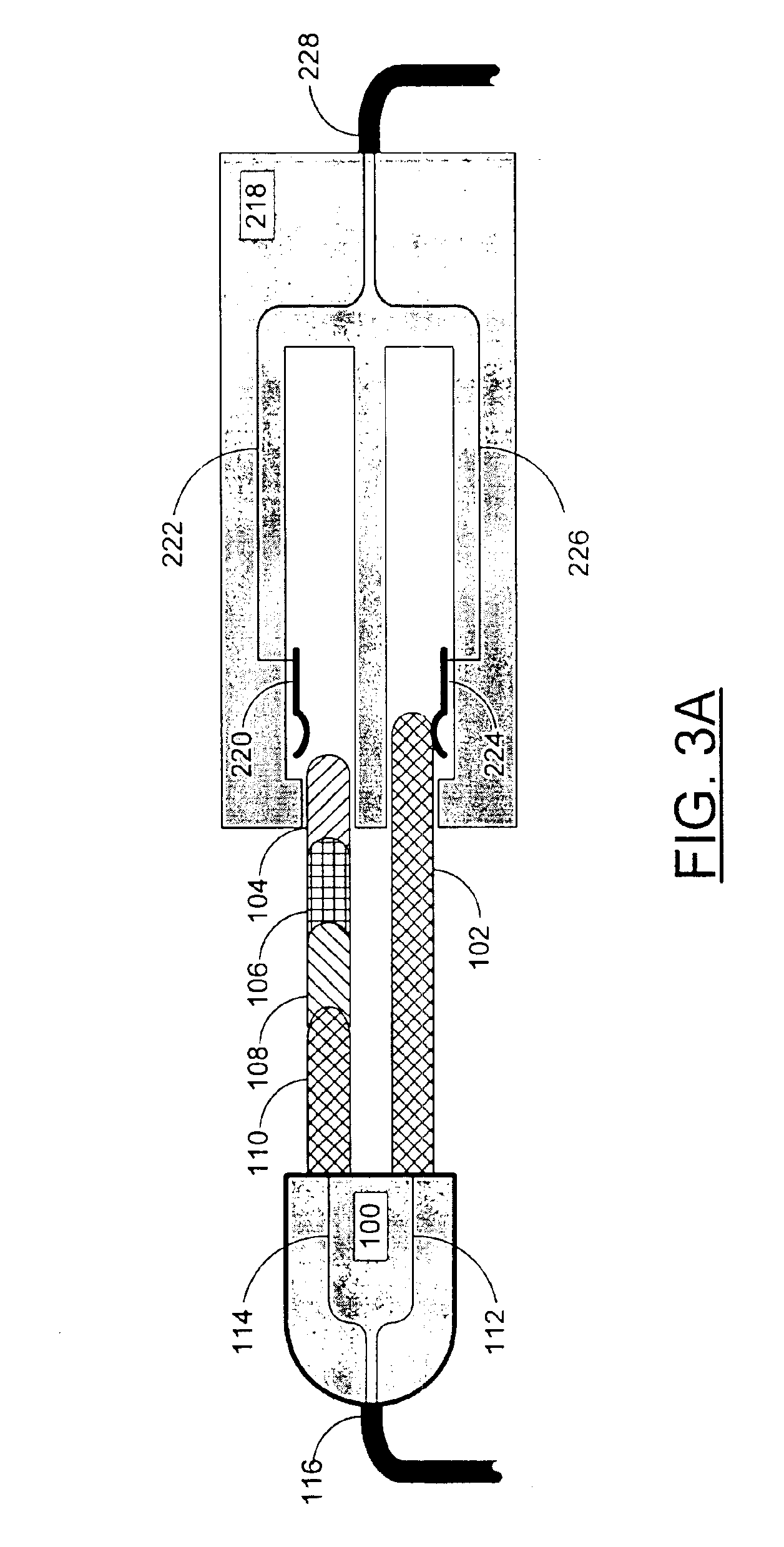Current limit engagement apparatus
- Summary
- Abstract
- Description
- Claims
- Application Information
AI Technical Summary
Benefits of technology
Problems solved by technology
Method used
Image
Examples
Embodiment Construction
FIG. 1 is a side view of an example embodiment of a current limit engagement apparatus according to the present invention. In this example embodiment of the present invention a two-pronged power plug is shown including a plug body 100, a ground conductor 112, a power conductor 114, a cable 116 for connecting the plug to an electric device, a ground pin 102, and a power pin including a current limiting apparatus. Note that in this example embodiment of the present invention, the ground pin 102 is longer than the power pin. This allows the ground pin to make first connection with a mating socket before the power pin starts to make a connection. In this example embodiment of the present invention the power pin includes a first segment 104, with a high series resistive value to limit the initial inrush of current to the electric device, a second segment 106, with a lower resistive value than the first segment 104, a third segment 108, with a lower resistive value than the second segment...
PUM
 Login to View More
Login to View More Abstract
Description
Claims
Application Information
 Login to View More
Login to View More - R&D
- Intellectual Property
- Life Sciences
- Materials
- Tech Scout
- Unparalleled Data Quality
- Higher Quality Content
- 60% Fewer Hallucinations
Browse by: Latest US Patents, China's latest patents, Technical Efficacy Thesaurus, Application Domain, Technology Topic, Popular Technical Reports.
© 2025 PatSnap. All rights reserved.Legal|Privacy policy|Modern Slavery Act Transparency Statement|Sitemap|About US| Contact US: help@patsnap.com



